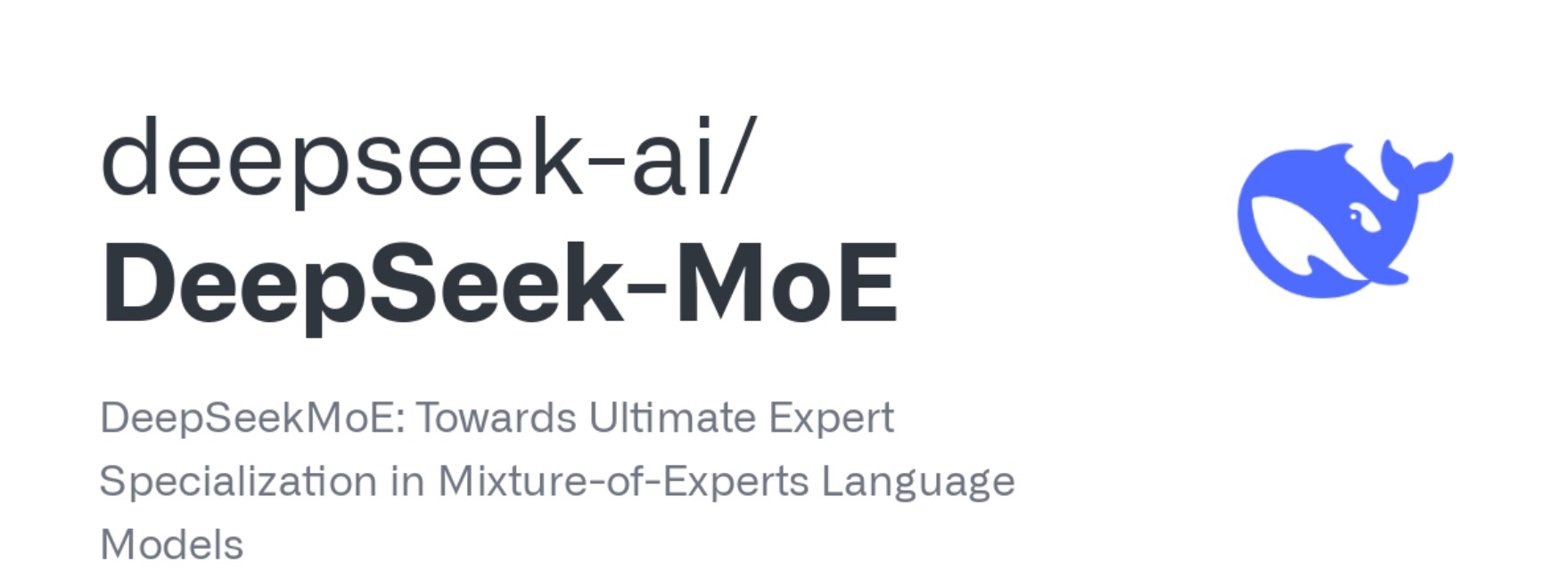
March 08, 2025
DeepSeekMoE Explained: The Smartest Way to Scale AI Models
Large language models (LLMs) are behind the rapid evolution of AI. However, most of these models are dense, using all parameters for every task, which increases computing expenses. However, DeepSeekMoE (Mixture of Experts) changes the game.
DeepSeekMoE activates just a subset of model experts for each input, making it more efficient and high-performing. It is like having a team of experts instead of a generalist; each performs what it does best.
This article covers DeepSeekMoE's variants, local setup, fine-tuning, and limitations. If you like strong, efficient AI models, you are in the right spot.
DeepSeekMoE Model Variants
DeepSeekMoE has two main variations for various tasks:
DeepSeekMoE 16B Base
This general-purpose model is ideal for text generation, summarization, and NLP. It excels at broad AI tasks and performs well in research and production.
DeepSeekMoE 16B Chat
Use this variant for chatbots, virtual assistants, and interactive AI. For dialog-based activities, DeepSeekMoE 16B Chat provides more genuine, context-aware, and conversational replies. Coherence and involvement are better than simple LLMs.
How to Run DeepSeekMoE Locally
It is not as hard as it sounds to set up DeepSeekMoE on your computer, but you will need a GPU with a lot of memory to make it work well. Start by following these steps.
Step 1: Install the Required Dependencies
Make sure you have Python 3.8 or later and PyTorch installed first. Then, install the libraries that you need:
pip install torch transformers deepseek-moe
Step 2: Load the Model and Tokenizer
After setting up, you can use the Transformers library from Hugging Face to load and run the model.
from transformers import AutoModelForCausalLM, AutoTokenizer
# Load the model and tokenizer
model_name = "deepseek-ai/deepseek-moe-16b-chat"
tokenizer = AutoTokenizer.from_pretrained(model_name)
model = AutoModelForCausalLM.from_pretrained(model_name, device_map="auto")
# Process input text
input_text = "Explain Sparse Mixture of Experts in simple terms."
inputs = tokenizer(input_text, return_tensors="pt").to("cuda")
# Generate a response
output = model.generate(**inputs, max_new_tokens=100)
print(tokenizer.decode(output[0], skip_special_tokens=True))
Step 3: Run Inference
The model will respond after you run the script. It might be slow if you run this on a CPU. It works best to use a GPU with at least 16GB of VRAM.
How to Fine-Tune DeepSeekMoE
You can fine-tune your DeepSeekMoE to fit different tasks, datasets, or areas. Fine-tuning is helpful whether you want a chatbot that is very specific or an AI model that has been trained in medical literature.
Step 1: Prepare Your Dataset
For fine-tuning, you need a dataset that is well organized. You can use OpenWebText or custom files in JSON or CSV format for Hugging Face.
from datasets import load_dataset
dataset = load_dataset("openwebtext")
print(dataset)
Step 2: Set Up the Training Environment
Define training arguments and load the model.
from transformers import Trainer, TrainingArguments, AutoModelForCausalLM, AutoTokenizer
model_name = "deepseek-ai/deepseek-moe-16b-base"
tokenizer = AutoTokenizer.from_pretrained(model_name)
model = AutoModelForCausalLM.from_pretrained(model_name, device_map="auto")
training_args = TrainingArguments(
output_dir="./results",
per_device_train_batch_size=2,
per_device_eval_batch_size=2,
evaluation_strategy="epoch",
save_strategy="epoch",
logging_dir="./logs",
logging_steps=100
)
Step 3: Train the Model
Now, use the Trainer API to start fine-tuning.
from transformers import Trainer
trainer = Trainer(
model=model,
args=training_args,
train_dataset=dataset["train"],
eval_dataset=dataset["test"],
)
trainer.train()Hardware-dependent fine-tuning might take hours or days. After fine-tuning, you can use the model for inference as previously.
Limitations of DeepSeekMoE
DeepSeekMoE is strong yet imperfect in some areas. Let's see its some major limitations:
- High Resource Demand: This model limits access for regular users as it depends on a strong GPU for flawless operation.
- Complex Fine-Tuning: In contrast to classic models, Mixture of Experts (MoE) design enables more complex fine-tuning.
- Latency Variability: Response times might be uneven due to the dynamic activation of experts.
- Limited Open-Source Community: LLaMA and GPT models have larger open-source support networks than DeepSeekMoE.
If you have the necessary hardware and skills, DeepSeekMoE can revolutionize AI efficiency.
Conclusion
DeepSeekMoE, which optimizes computation using a Mixture of Experts (MoE), is an appealing AI model advancement. It handles general AI and conversational AI with Base and Chat.
Locally, it needs a powerful GPU but performs well. Though difficult, fine-tuning may customize it to particular purposes.
DeepSeekMoE is a strong alternative to dense LLMs as AI models get smarter and more resource-efficient. This model may be ideal for your next project if you want efficiency and intelligence.
542 views
